Hue, the former imperial capital of Vietnam, is a city that offers a deep dive into the nation’s rich history and culture. Known for its ancient architecture, royal palaces, and cultural landmarks, Hue is a treasure trove for solo travelers who want to explore Vietnam’s heritage. Whether you’re wandering through its ancient citadels, savoring traditional dishes, or visiting tranquil pagodas, Hue provides an immersive experience of Vietnamese history and culture.
If you’re planning a solo trip to Hue, here’s a guide on how to fully experience the city’s rich cultural and historical offerings.
1. Visit the Imperial City (The Citadel)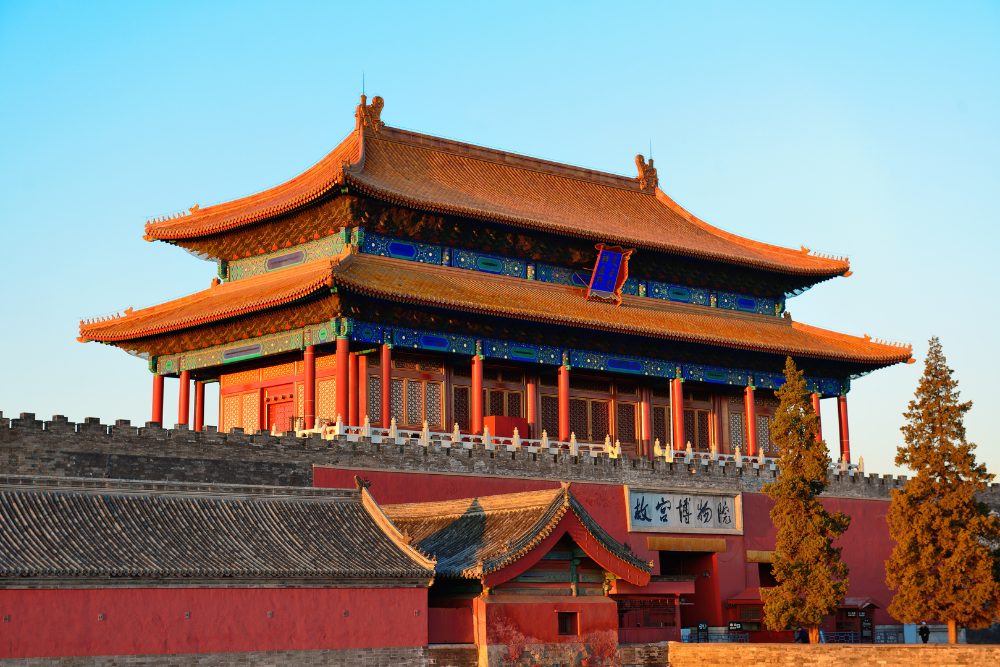
Why It’s a Must-See: The Imperial City, or the Citadel, is Hue’s most famous and historically significant landmark. It served as the capital of Vietnam from 1802 until 1945 and was the political, cultural, and religious center of the Nguyen Dynasty. A visit to the Citadel offers a chance to step back in time and witness the grandeur of Vietnam’s royal past.
What to Do:
- Explore the Forbidden Purple City: Within the Citadel, the Forbidden Purple City was once the residence of the emperor and his family. Although much of it was destroyed during the Vietnam War, the remaining structures give you a glimpse into the luxurious life of the royals.
- Visit the Imperial Palaces: Don’t miss the various palaces, gates, and temples, including the Ngo Mon Gate and the Imperial Theatre. The architecture is a beautiful blend of Vietnamese, Chinese, and French influences, showcasing the nation’s unique cultural evolution.
Solo Traveler Tip: Take a guided tour to learn about the rich history behind the Citadel and the Nguyen Dynasty. Many local guides offer in-depth knowledge and fascinating stories that can help bring the ruins to life.
2. Explore the Royal Tombs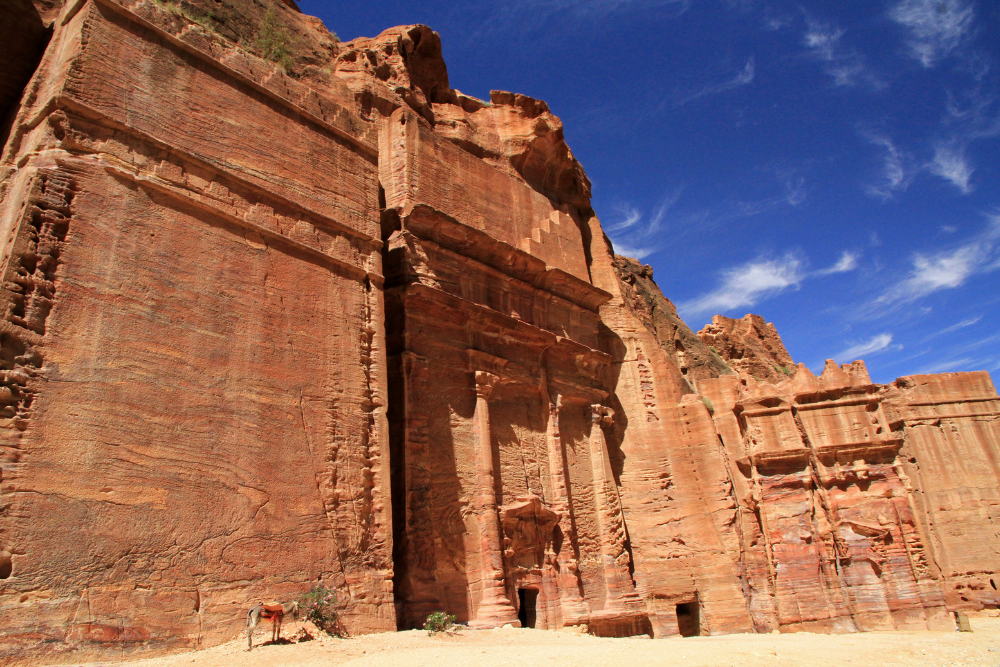
Why It’s a Must-See: Hue is home to several royal tombs, each with its unique architecture, lush landscapes, and historical significance. These tombs were built for emperors of the Nguyen Dynasty, and they reflect the spiritual beliefs, architectural styles, and royal customs of the time.
What to Do:
- Visit the Tomb of Minh Mang: Known for its serene landscape and impressive architecture, this tomb is a great place to experience Vietnamese imperial architecture in a natural setting. It’s set in a forested area with elegant pavilions and ponds.
- Explore the Tomb of Khai Dinh: This tomb is a fusion of Eastern and Western styles, showcasing the emperor’s attempts to blend traditional Vietnamese design with European influences. The intricate mosaics and decorations are stunning.
- Tomb of Tu Duc: One of the most picturesque tombs, Tu Duc’s resting place is located in a tranquil setting, surrounded by pine trees and a beautiful lake.
Solo Traveler Tip: Rent a bike or motorbike to explore the tombs, which are scattered around the outskirts of the city. The journey through the countryside offers a peaceful escape and allows you to fully appreciate the stunning landscapes.
3. Wander Through Thien Mu Pagoda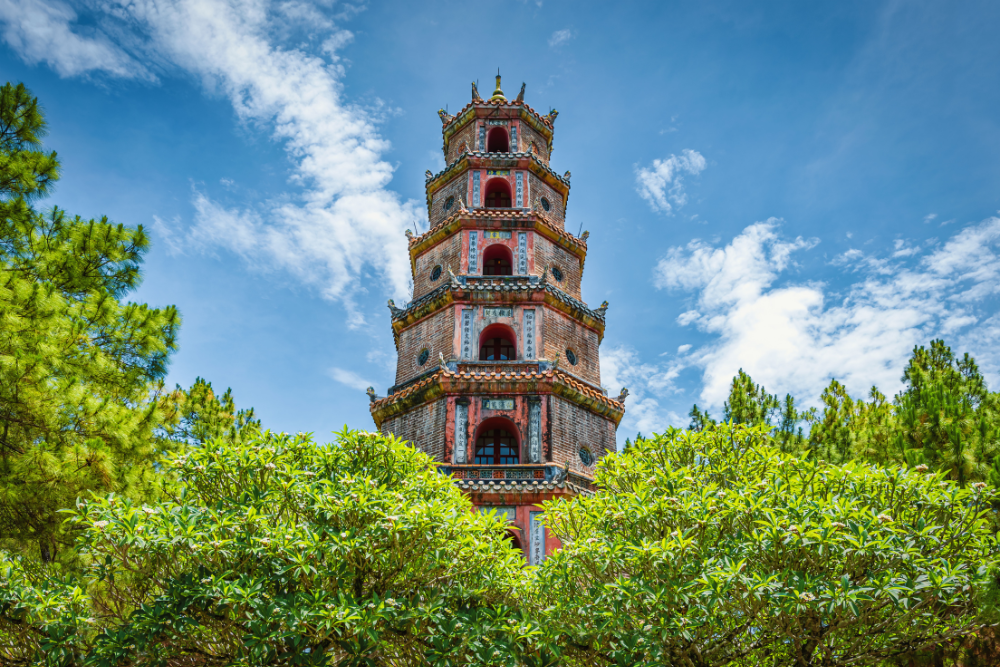
Why It’s a Must-See: Thien Mu Pagoda, or the “Heavenly Lady Pagoda,” is one of Vietnam’s most iconic pagodas. Located on the banks of the Perfume River, this serene place of worship is both a religious and historical site. The pagoda played a significant role during the Buddhist monk protests of the 1960s, adding layers of political history to its spiritual significance.
What to Do:
- Admire the Pagoda’s Architecture: The seven-story Thien Mu Pagoda is an impressive sight and one of the most photographed landmarks in Hue. Climb up to the top for a beautiful view of the river and surrounding landscape.
- Learn the History: Don’t miss the nearby historical exhibits detailing the role of Thien Mu Pagoda during Vietnam’s political protests. The story of the monk Thich Quang Duc, who self-immolated in 1963, is a moving part of Vietnamese history tied to the pagoda.
Solo Traveler Tip: Thien Mu Pagoda is a peaceful place, perfect for some solo reflection. Take your time to sit by the river and absorb the tranquil atmosphere of this iconic site.
4. Cruise on the Perfume River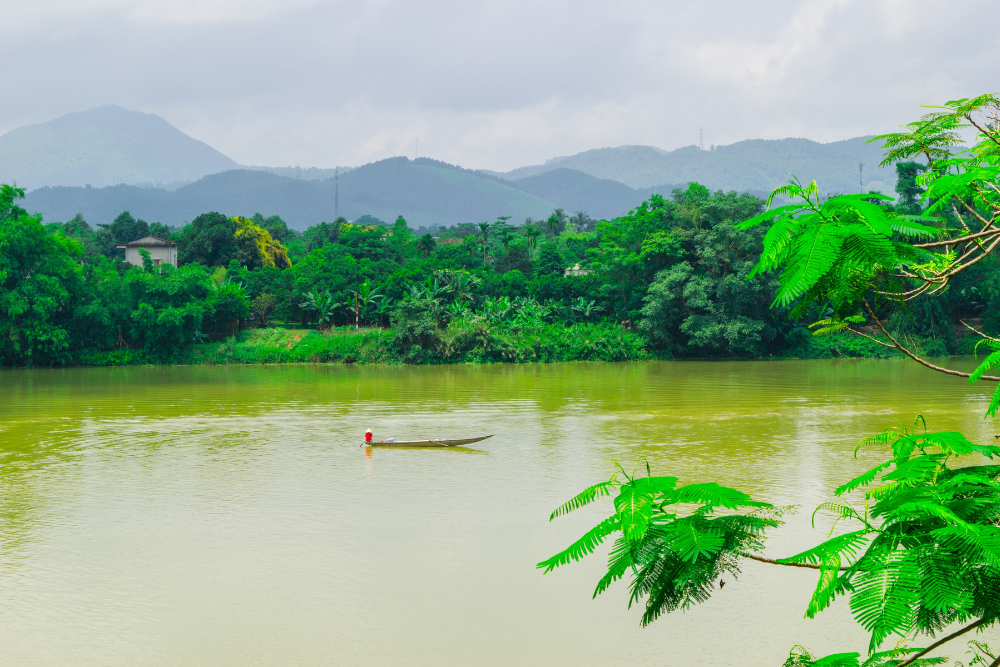
Why It’s a Must-See: The Perfume River, known as Sông Hương, is one of Hue’s most important cultural and natural landmarks. The river flows past ancient pagodas, royal tombs, and lush countryside. A boat cruise on the river allows you to see Hue from a different perspective and appreciate the city’s stunning landscapes.
What to Do:
- Take a Traditional Boat Ride: Solo travelers can book a private boat or join a group cruise along the river. The journey offers a calm and peaceful way to take in the sights, with stops at Thien Mu Pagoda and other riverside attractions.
- Visit the Perfume River’s Islands: Some boat tours also include stops at small islands along the river, such as the Hương Tích island, where you can explore nature and learn about local life.
Solo Traveler Tip: For a more intimate experience, try to book an early morning or sunset cruise. The lighting at these times offers a stunning view of the river and the surrounding landmarks.
5. Try Traditional Hue Cuisine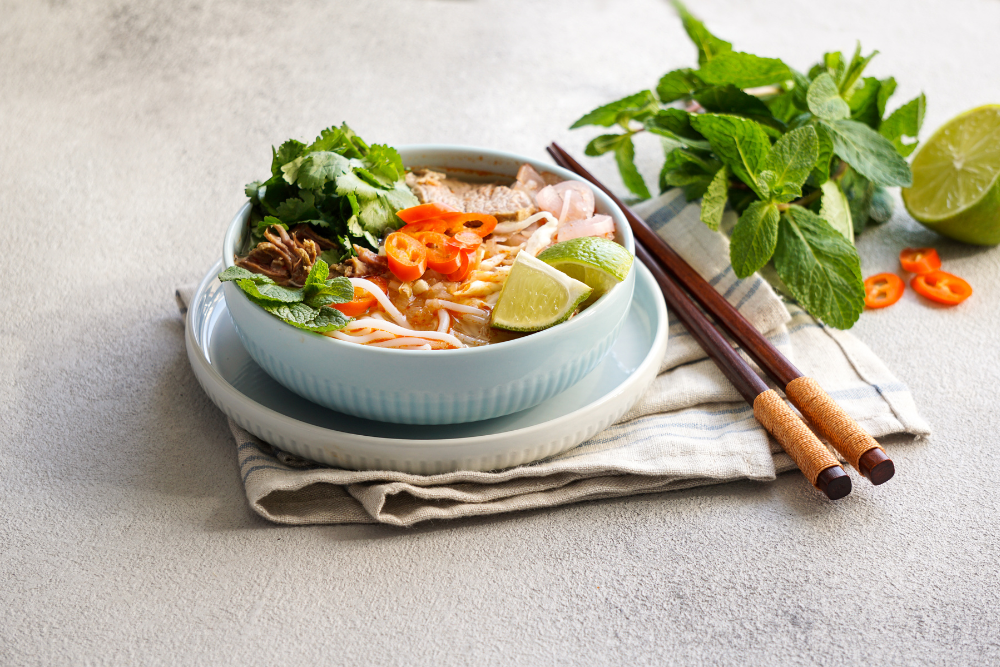
Why It’s a Must-See: Hue’s cuisine is famous for its unique flavors and royal roots. As the former imperial capital, Hue is known for its complex and delicate dishes that were once reserved for the royal court. Trying Hue’s food is a must-do experience for any traveler interested in Vietnamese culture.
What to Do:
- Sample Bún Bò Huế: This spicy beef noodle soup is one of Hue’s most famous dishes. The rich broth, tender beef, and unique combination of herbs and spices make it a standout dish.
- Try Royal Court Cuisine: Hue is home to an array of dishes once served to the emperors, such as Bánh bèo (steamed rice cakes) and Bánh nậm (dumplings). Many restaurants in Hue specialize in these traditional dishes, offering a taste of history.
- Visit Dong Ba Market: For an authentic experience, visit Dong Ba Market where you can sample street food like bánh khoái (Hue pancakes) and nem lụi (grilled pork skewers).
Solo Traveler Tip: Hue’s food is often made to be shared, but don’t worry—most eateries serve small portions, so you can easily try a variety of dishes on your own. Don’t hesitate to chat with locals about the best places to eat!
6. Visit the Hue Museum of Royal Antiquities
Why It’s a Must-See: Located within the Imperial City, the Hue Museum of Royal Antiquities showcases a collection of artifacts from the Nguyen Dynasty. This museum is an excellent place for solo travelers to explore the history of Vietnam’s last ruling family.
What to Do:
- Admire the Collection: The museum features royal costumes, personal items of the emperors, and a range of ceremonial objects, providing insight into the luxurious lifestyle of the imperial court.
- Learn About the Nguyen Dynasty: Many items are accompanied by detailed descriptions of their historical significance, allowing you to deepen your understanding of the era.
Solo Traveler Tip: Take your time exploring the exhibits, and ask the staff for more information about specific items—many of them have fascinating stories behind them.
7. Explore the Hue Ancient Town and Local Markets
Why It’s a Must-See: The ancient town of Hue is full of life, with narrow streets lined with charming cafes, artisan shops, and vibrant local markets. For solo travelers, this area offers a chance to wander and immerse yourself in local life.
What to Do:
- Stroll the Streets: Walk around the ancient town to see traditional houses, local craft shops, and cafes offering a cozy respite from the heat.
- Visit Local Markets: Don’t miss out on the local markets, especially Dong Ba Market, where you can buy traditional handicrafts, silk garments, and fresh produce. It’s also a great spot to sample local street food.
Solo Traveler Tip: The streets around the ancient town are perfect for wandering and discovering hidden gems. Take your time to explore at your own pace and chat with the friendly locals.
Conclusion: Embrace the History and Culture of Hue
Hue is a city that allows solo travelers to truly immerse themselves in Vietnam’s rich history and culture. From exploring the Imperial City and royal tombs to experiencing the tranquility of the Perfume River and indulging in unique Hue cuisine, there are countless ways to learn about Vietnam’s imperial past and vibrant present. Whether you’re a history enthusiast, a food lover, or someone seeking spiritual solace, Hue offers a fascinating and enriching experience that you won’t forget.












